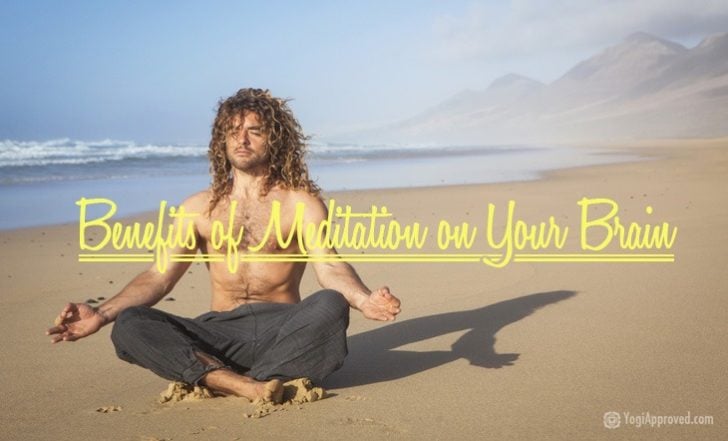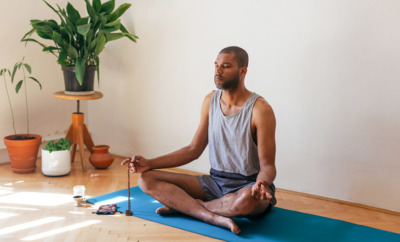Vedic Meditation 101: Your Guide to This Ancient Tradition

VedicMeditation feature
There are many types of meditation, and this number continues to grow as the practice of meditation becomes more and more mainstream. While there are many forms of meditation that have taken to technology and are available through apps and online courses, there are a handful of practices still taught in their traditional form.
One of these traditions is Vedic Meditation.
The word Vedic itself means “from the Vedas.” The Vedas are ancient texts and an ancient body of knowledge originating from India. However, they are considered universal knowledge because this same information has been recognized all over the world.
It is the same body of knowledge that yoga and Ayurveda stem from. The Vedas are over 5,000 years old and key components of the Vedic Meditation style can be found in them.
There are several different meditation techniques that are called Vedic Meditation in India including a system of isometric exercises leading to unification. However, in this article, we will address Vedic Meditation as passed down by Swami Brahmananda Saraswati, Shankaracharya of Jyotir Math.
Here Are 5 Key Components of Vedic Meditation:
While you can find different online courses on Vedic Meditation, a key component that makes Vedic Meditation what it is, is that every person is directly taught from a person who has gone through thousands of hours of advanced training.
Vedic Meditation is typically taught in a basic four-day course. In the course, you learn the key components of meditation and a completely self-sufficient meditation practice.
Here are five of the major aspects of this style of meditation:
1. Vedic Meditation Uses Mantra
Vedic Meditation uses a specific type of mantra called a bija mantra. Bija means “seed” as in the seed is planted and, through daily practice, it is watered so the beautiful flower can grow.
This type of mantra does not work on the level of meaning, but rather the vibrational level of sound. When we use words like “love” and “compassion” as our mantra, we are putting our attention on these words so, naturally, they will grow. But this is a very different practice of meditation.
As we think love in our head, naturally this stimulates thoughts. All the times you felt loved or didn’t feel loved will naturally pop into your mind. But by using a mantra without meaning, the sound itself is engineered to take our mind to more subtle states of being.
Your mantra is given to you by a teacher on the first day of the course. It is based on your life stage, but there are also a few different reasons why a teacher would give a specific mantra.
Not sure what a mantra is? Read: What Are Mantras and Why Do We Use Them In Yoga?
2. Vedic Meditation Is Effortless
In this technique, there is no concentration and no forcing of the mind. On the second day of the four-day basic meditation course, you are given extensive training on what it means to be effortless and how it is a key component of getting the “open-eyes” result we hope for from our practice.
Vedic Meditation embraces thoughts as an integral part of the process of meditation. And during the practice, we favor comfort, which is why we practice using back support rather than a rigid spine.
3. Vedic Meditation Is for Busy People
This technique was designed for busy people with busy lives and even busier minds (yes, you!). For this reason, it is practiced twice a day for 20 minutes.
This is the time-tested duration that optimizes our “eyes open” productivity. There is no goal of eventually being able to sit for two hours straight.
In this technique, you can keep all your beliefs and normal daily habits. You don’t have to prescribe to a religion, wear different clothes, believe the technique will work, or eat a certain diet. Vedic Meditation accepts you just as you are with no condition of having to change.
4. Vedic Meditation Is Taught in Person
While they’re called Vedic Meditation teachers, “initiators” is probably a better word to describe the person you learn from. The initiator is a life-long resource for you to answer questions that arise during practice and help advance your practice if you choose.
By learning in person, you get an exchange of energy between initiator and students. This initial energy exchange is part of the technique and it helps you know if the initiator is the right person to teach you.
Vedic Meditation initiators are all independent meditation teachers. There is no organization or company attached. While tradition is a key component, there is also a lot of room for flexibility and individuality.
There are key principles that each initiator teaches, but there is no governing body or overarching authority. This means that each initiator will have their own unique stories, metaphors, and experiences that they teach.
When you learn Vedic Meditation, you can join in on any group meditation worldwide, which means you can benefit from the knowledge of the entire collective community.
5. Vedic Meditation Has a Gratitude Ceremony
Before you receive any “eyes closed” technique in this tradition, a gratitude ceremony is performed. Vedic Meditation is an oral tradition and lineage can be traced back thousands of years.
By performing the gratitude ceremony, we ensure the remembrance of the long list of masters of knowledge who have come before us. It also makes it so the initiator teaches from a place of humility.
Here Are 3 Benefits of Vedic Meditation:
Dr. Norman E. Rosenthal’s book Transcendence explains many of the scientific benefits of meditation very clearly. He goes into study after study on the benefits of bija mantra-based practices.
Some of these benefits include reduced anxiety and PTSD, improved heart health, and help in recovery from addictions. In addition, here are a few benefits that my students have reported from Vedic Meditation.
1. Increases Energy
This technique is so effective at increasing energy, that it is not advisable to practice too close to bedtime. Students who do practice right before bed, have reported waking up in the early morning, wide awake, not able to fall back asleep.
For this reason, the second practice is suggested in the afternoon. My colleagues and I average needing fewer hours of sleep a night since starting our meditation practice, while also maintaining more alertness and stamina throughout the day.
On the post-course surveys, 60% of students reported improved sleep within months of learning Vedic Meditation.
Need a Quick Energy Boost? Try This Energizing Breathing Technique (AKA Bellows Breath)
2. Reduces Irrational Fears
Many of my students have reported reduced irrational fears. Since I started meditating while flying, my fear of planes has completely vanished.
I have another student who noticed her palms no longer sweat when going over bridges. Other students have reported a decrease in social anxiety, fear of spiders, and fear of public speaking.
As discussed on the third day of the course, the stress response or “fight or flight response” is turned off during meditation which is a key factor in our experience of fear.
Struggle with fear and anxiety? Here’s How You Can Override Your Fight or Flight Response (And Why You Want to)
3. Increases Productivity at Work
One student likened the Vedic Meditation practice to the importance of recess for school children. Just as a child must have adequate time outside in order to pay attention in the classroom, your mind also needs time to play and be free so it can then concentrate and focus the rest of the day.
Vedic Meditation students report going home earlier from work and getting those late afternoon assignments done faster.
Similarly, an article by David R. Frew, showed that effortless meditation techniques increased job satisfaction, increased performance, and improved relationships with supervisors and coworkers.
Need more productivity help? Here are 10 Productivity Hacks to Maximize Your Time at Work
Important Final Notes on Vedic Meditation
Vedic Meditation is a simple, natural technique with historical roots, but it is not just sunshine and roses. It is important to note that a huge part of the benefits of Vedic Meditation come from the stress release that people experience.
Stress can release through physical means such as a muscle spasm or the body heating up or through an emotional means, like crying.
Emotional release is the most common, which means feelings of anger, guilt, sadness, and regret can arise during practice. Any trained initiator will be able to guide you through these experiences safely in order for you to go on to experience less tension and more vitality.
The severity of these experiences as well as the duration and frequency is unique to the individual and normally correlates to the amount of trauma experienced. Many of the students who experience heavy stress release go on to receive the most benefits from this meditation practice.
If you would like to learn more about Vedic Meditation, find a teacher in your area. If there isn’t a current teacher in your area, there are many teachers who travel to teach. Any initiator of the tradition will be able to find you a basic four-day course to attend.


This Month's Letter
From the Editor
Monthly motivation and food for
thought from our founder.





























